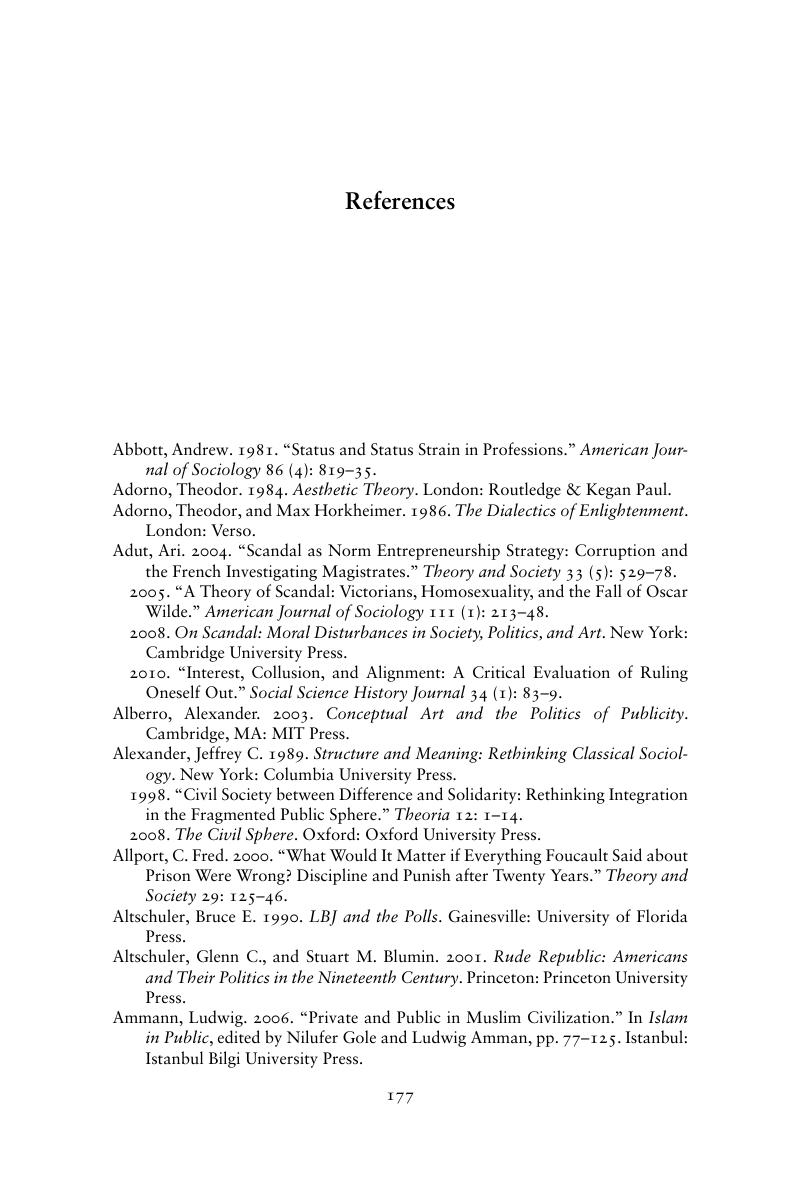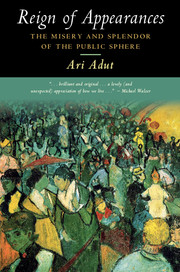Book contents
- Reign of Appearances
- Reign of Appearances
- Copyright page
- Dedication
- Epigraph
- Contents
- Preface
- Acknowledgments
- 1 A Critique
- 2 A Realistic Perspective
- 3 Publicity
- 4 Politics in Public
- 5 Content Regulation
- 6 Visibility in Society
- 7 Justice and Morality in the Public Sphere
- 8 A Defense of Spectatorship
- Endnotes
- References
- Index
- References
References
Published online by Cambridge University Press: 26 February 2018
- Reign of Appearances
- Reign of Appearances
- Copyright page
- Dedication
- Epigraph
- Contents
- Preface
- Acknowledgments
- 1 A Critique
- 2 A Realistic Perspective
- 3 Publicity
- 4 Politics in Public
- 5 Content Regulation
- 6 Visibility in Society
- 7 Justice and Morality in the Public Sphere
- 8 A Defense of Spectatorship
- Endnotes
- References
- Index
- References
Summary

- Type
- Chapter
- Information
- Reign of AppearancesThe Misery and Splendor of the Public Sphere, pp. 177 - 200Publisher: Cambridge University PressPrint publication year: 2018



